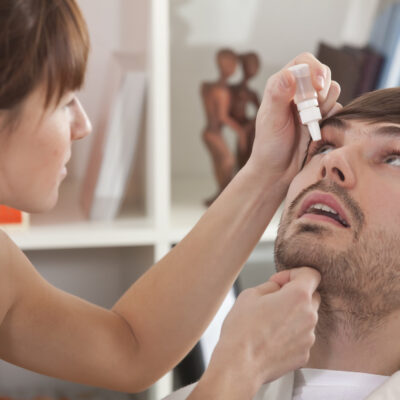
Causes and symptoms of glaucoma
The images captured by the eyes are in the form of visual information that nerves in the eyes transmit to the brain. There are numerous nerves that crisscross the eyes, but among the most important are the optic nerves. They transmit the visual creating data to the brain from the eyes. Glaucoma is essentially age-related, as over a period of time, pressure tends to cause strain on the optic nerves. This pressure can end up rupturing the nerves, thus affecting vision.
Glaucoma is hereditary and does not show any signs until later in life, but it can get worse over a long period of time. Acute cases of glaucoma, if undetected, can even lead to poor vision and even complete vision impairment. If detected in the initial stages, it can be treated to prevent acute damage. Loss of one’s vision due to glaucoma cannot be recovered.
The anterior chamber is a small spot located in front of the eyes. It is from here that a transparent fluid flows through this chamber both ways. This fluid is vital to maintain a balance of tissues in this region of the eyes and also to nourish and keep the eyes in good health. When a person has glaucoma, this vital fluid tends to remain within the eye instead of flowing out. This stagnation of fluid subsequently causes pressure on the optic nerves inside the eyes.
Glaucoma usually affects both eyes, but it is possible for one of the eyes to be affected more seriously than the other. The damage to the optic nerves results in people developing blind spots in their line of vision. People above the age of 40 in the country are most likely to develop glaucoma. There are rare instances of young adolescent boys and girls and even children suffering from it.
People with diabetes face a greater risk of developing it. Those who have a history of glaucoma in their family should get their eyes tested every 18 months once they turn 40. People with eyes whose corneas are thin in the center also face an increased risk of developing glaucoma. It is also possible that some people without a family history of glaucoma suffer from extreme conditions of far and near-sightedness at a young age. These people run a huge risk of suffering from glaucoma. Self-medication and administering certain eye-drops without consulting an ophthalmologist over a long spell of time can also cause glaucoma.
An obvious sign of glaucoma is vision on one side of the eyes. Haziness in vision, decreasing clarity in vision, eye redness, pain, and tunnel vision are other common symptoms. People with glaucoma tend to see a halo around bright objects and always around lights. They will also suffer from severe eye pain and bouts of headache. People should immediately consult an ophthalmologist to establish if they suffer from glaucoma or if the pains are due to other causes. Regular examinations conducted by a trained practitioner will help in arriving at the measurements of eyes and pressure of optic nerves.


